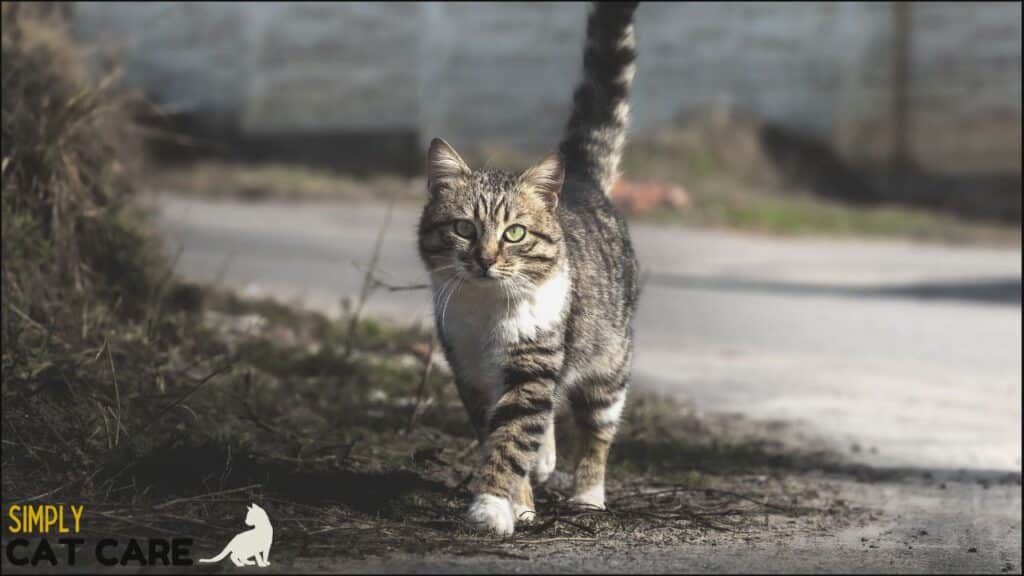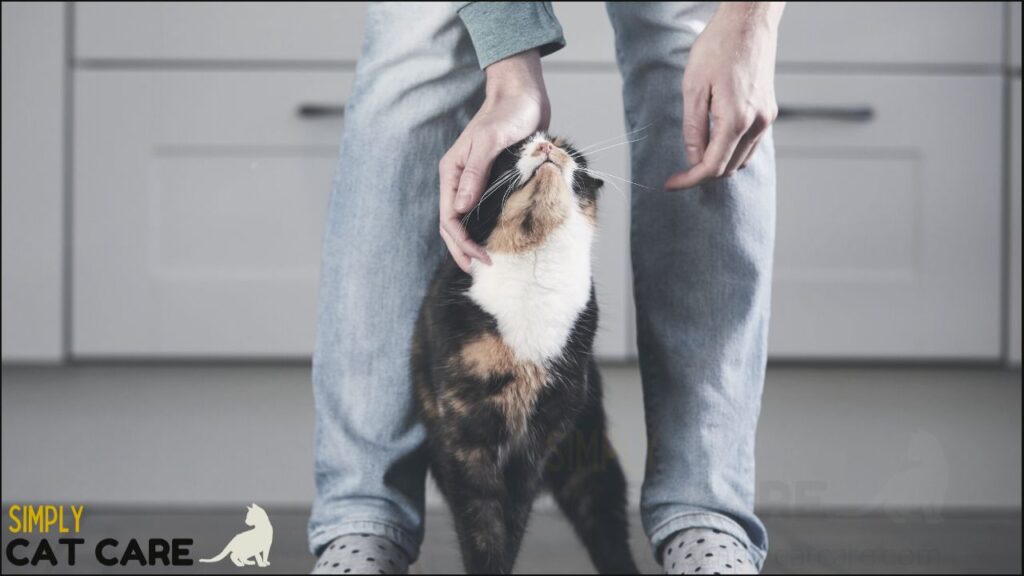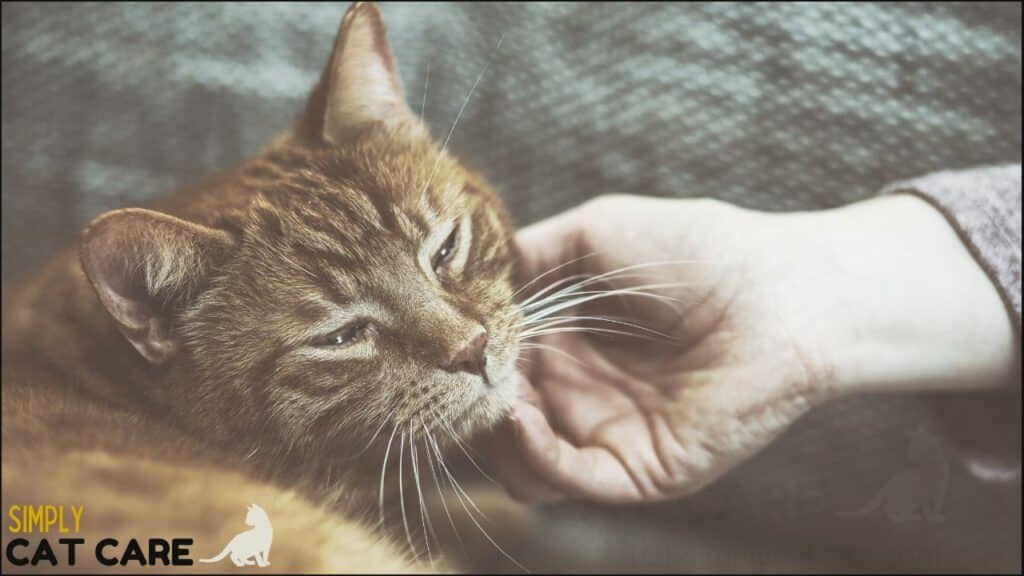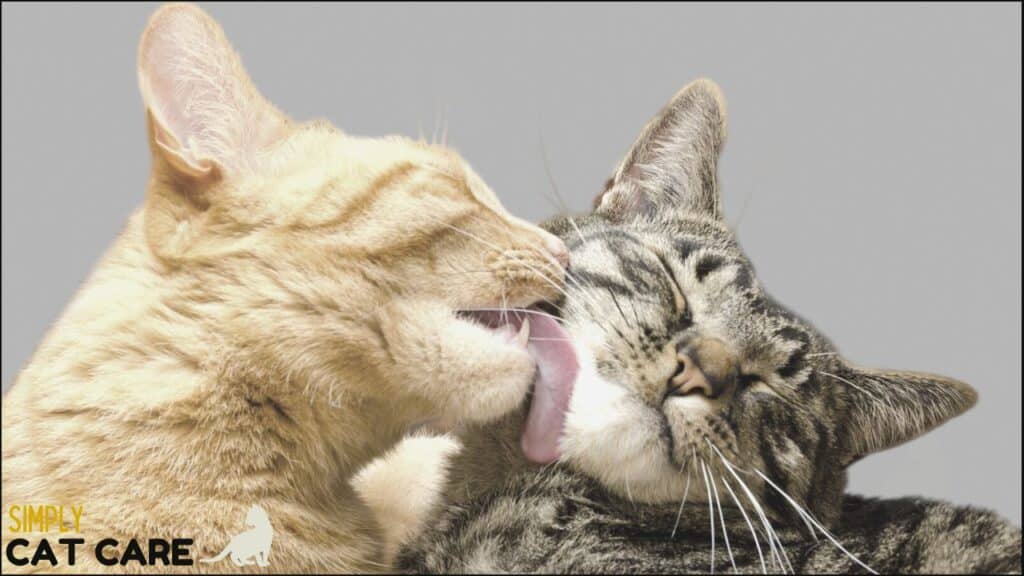How do cats show affection and comfort?
Here’s a few ways:
- A raised tail
- Exploration
- Head bunting
- Eye contact
- Grooming
- Purring
- Presenting gifts (i.e. prey)
In the rest of this article I’ll go into more detail about how these ways demonstrate affection and comfort in cats.
I am not a veterinarian and I recommend seeking the advice of a vet for any further questions relating to your cat’s health.
How Do Cats Show Affection?
Here’s a few ways:
- A raised tail
- Exploration
- Head bunting
- Eye contact
- Grooming
- Purring
- Presenting gifts (i.e. prey)
Here’s more detail about each:
Raised Tail
A study in 1997 found cat will approach a silhouette of a cat with a raised tail. This shows that a raised tail is one way a cat communicates comfort.
A cat may even wrap its tail around you to show it wants to interact with you.
I’ve found my cat also quivers his tail if I’m ready to give him food. So, your cat might be happy to see you – or your tasty treats.

Exploration
If your cat is happy, they may go exploring.
Although this seems unusual, it makes sense. One sign of security is for the cat to wander off to go exploring.
Cats want to learn more about the world around them, and exploration is a sign of comfort.
In a similar way to infants and dogs, cats can also form secure relationships with their owners.
In a cat’s language, this house exploration is a sign it’s part of the family.
Head Bunting
Bonk!
Ever get bumped by your frisky feline?
‘Head bunting‘ is the term for this, and is a good sign. This practice allows a cat to transfer its scent to an object.
Headbutting transfers pheromones from the scent glands onto the object to mark territory, but also be a way of demonstrating affection.
Be aware of if your cat presses its head against a surface and starts making unusual howling sounds. This may show pain and be worth checking in with the vet.
Learn more:

Eye Contact
Cats may communicate their connection to you through their longing gaze.
Research demonstrates that cats are able to respond to and follow gaze up to 70% of the time.
Slow blinking shows affection and is a subtle way of showing affection.
Research has shown that owners who slow blink with strong eye contact are more likely to get a cat to respond and approach.
Purring
Purring shows you are hitting the sweet spot. Your cat might show a positive response to contact around the cheek.
Other areas may be sensitive for a cat. Their tails and body areas near the belly are spots where your cat might not be so comfortable.
Another thing kittens and adult cats do is they love to start kneading with their paws. This happens with purring and is a sign your pet is showing its affection whilst on your bed.
Kneading is something young cats learn early in life. Learned as a kitten, they knead their mother’s teat to stimulate milk secretion.
Learn more:

Presenting Gifts
Has your cat ever walked up at your backdoor with a present (e.g. a dead mouse)?
This unusual behavior may be part of the complex evolution between humans and cats. Cats seemed to become popular with humans due to their ability to dispose of common pests, research suggests.
Then again, this sign of affection may be more a case of “I want to make myself useful to share this world with you”. It might be another form of kitty companionship – if a little strange.
Grooming
Does your cat start licking your hand?
This could be a sign of affection, as a cat’s mother will groom their babies.
Grooming is also a survival mechanism to clean young kittens from debris.
It is up for debate, but the grooming may show comfort and care for the owner.
If you notice a change in your cat’s grooming behavior, it might be worth visiting the vet. Grooming too often may lead to hairballs forming in the intestines. This may lead to your cat’s dry heaving.
Learn more:

Conclusion
So are cats affectionate creatures? Maybe.
While cats aren’t as vocal with humans as dogs they do have their ways of showing affection.
Cats show affection with grooming, head bunting, and purring. Or they’re just being loud.
Who knows.
